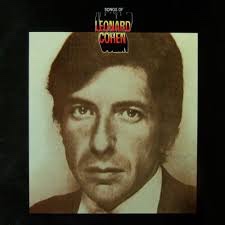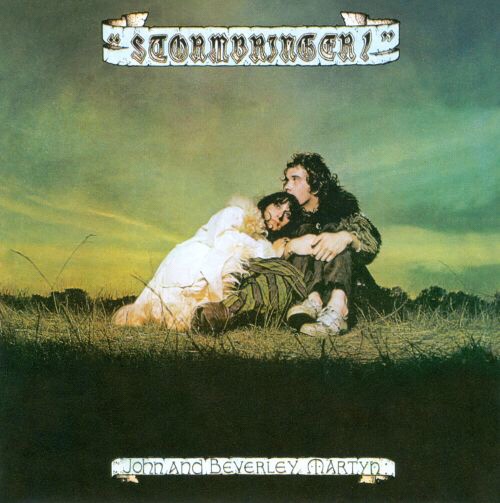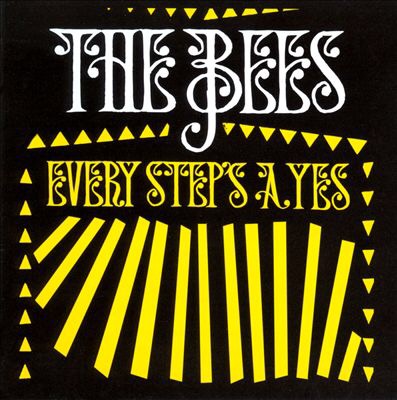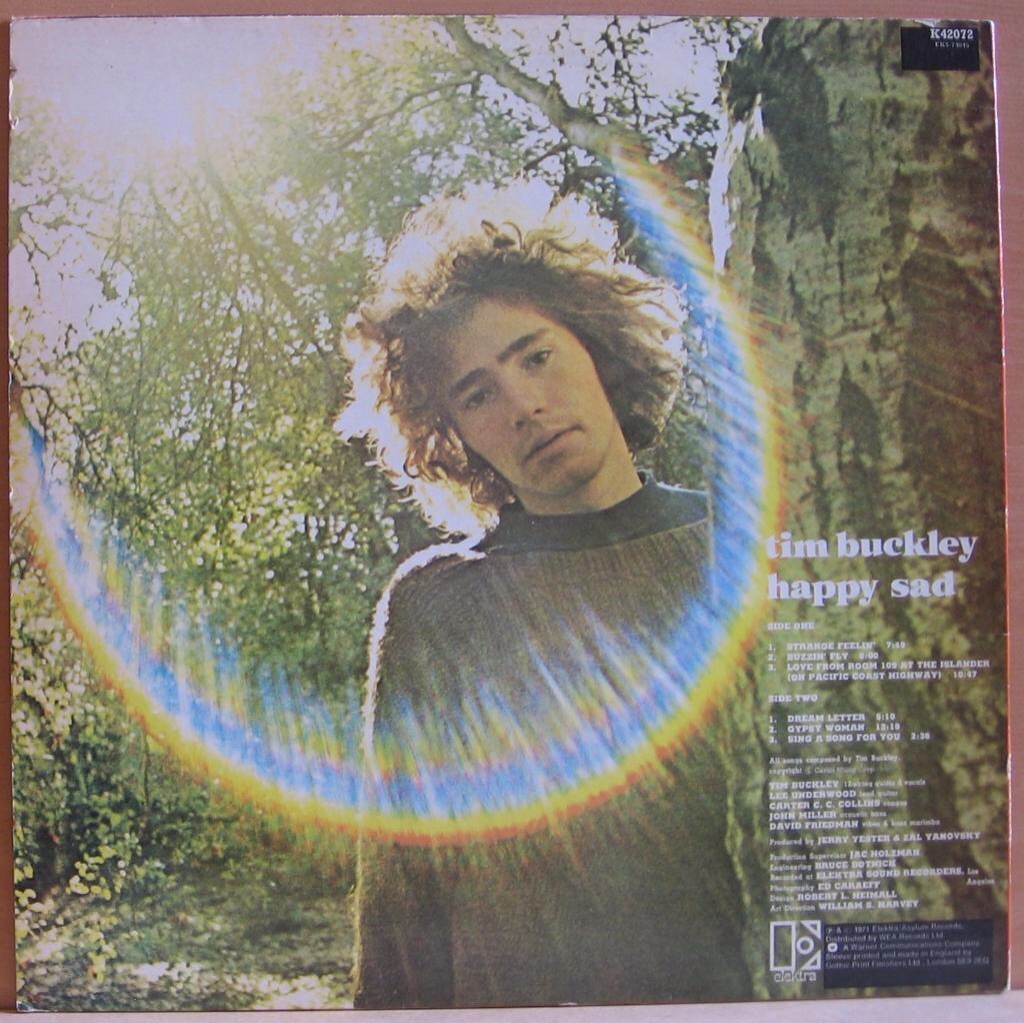
In late 1986 Stephen Duffy decided it was time for a change of direction. His second solo album Because We Love You, was a commercial flop and his record label, the Virgin subsidiary, 10, hardly enamoured with the plans he had for its follow up, proceeded to dispense with his services. Duffy regrouped with his brother Nick and their friend Michael Weston to record some new songs inspired by their shared love of folk and country music. His discovery of a compilation album by Nick Drake entitled Heaven In A Wild Flower in ’87 gave this vision crucial impetus. Drake’s renown was much slighter then than now, but the record’s impact was such that Duffy decided to christen the new band using a lyric from one of Drake’s songs. The trio, now reborn as The Lilac Time, soon signed to a small independent label called Swordfish, which, with little fanfare, released their (eponymously titled) debut album to quietly enthusiastic reviews at the tail end of ’87.
The switch to making more traditional music surprised many. Stephen’s pop pedigree was undisputed. He had after all been the founder of Duran Duran, and had written sizeable hits (‘Kiss Me’ and ‘Icing On The Cake’) not without flair and finesse. He was unmistakably a savant, his lyrics knowing and clever (how many Top 10 smashes possess lines such as “When I grow old I won’t forget / To innocence my only debt”?) On The Lilac Time, his pop sensibilities would remain intact, seeing him pen songs like ‘Return To Yesterday’ which had a chorus The Monkees would have died for, alongside its own banjo-fuelled rustic charm. In a similar vein, ‘Together’ was masterfully crafted and equally joyous. Pop would always be part of the package, but elsewhere Stephen finally sounded free to explore the music he loved, liberated from any pressure to populate the charts with hits.
To open the album with ‘Black Velvet’ was not only a brave move, but also a perfect calling card for Duffy’s second coming. As gentle as a snowflake, it sounds as if Stephen is hiding from the world – in some ways he was – but the sheer beauty and poetry of the lyric [“Found me a language that talks without blackmail…/ I called for you without words / And you answered like a kiss.”] slowly sweet-talk the sparse instrumentation out of the shadows, and if one listens closely enough, the little cracks and tremors of yearning in his voice lend the song huge emotional weight.
‘Love Becomes A Savage’ mines even greater depths. [“And if you get married / You’ll find out that it’s true / Love becomes a savage / Who’s going to savage you.”] Frank, more than a tad fearful (oh youthful pessimism!), genuinely erotic, possibly even a little self-righteous, it – for a fleeting moment – appears to cradle in its arms the secret to happiness in human relationships, only to concede – like sand slipping through one’s fingers – to their impossible fragility. It’s the sort of thing Leonard Cohen may well have conjured up, although Lenny, God rest him, would no doubt have been tempted to inject a profanity or two into the mix. For art’s sake.
These two songs could have been written yesterday. That the album made few concessions to modernity lends it a certain timelessness and consequently it has aged remarkably well. Even its humble sleeve – with a picture of the house where the band rehearsed – suggested a new back-to-basics stoicism. Only the gothic country of ‘Rockland’ incorporates some technology of sorts. Indeed, it could quite feasibly read as a prescient state of the nation address [“Our leaders are assassin’s friends / And we aren’t needed for their ends / No industry or open wars / They cut health care and lock the doors.”]
Duffy must have divined he was onto something special and he was determined to make it happen. After only a few months on the shelves the band signed to Fontana, and The Lilac Time was quickly given a production makeover and reissued in early ’88. There issued one deviation in the album’s running order (‘Rockland’ swapped places with ‘Return To Yesterday’), but it was on the more uptempo tracks where one noticed the extra polish and depth of the remix, particularly on ‘You’ve Got To Love’ and ‘Too Sooner Later Than Better’, both of which were virtually hoedown barndancers by comparison to ‘Love Becomes A Savage’, surely symptomatic of the underlying musical contentment of its creators. But it did also contain more elusive moments, harder to read, such as the bittersweet ‘Road To Happiness’ whose theme seems strangely at odds with the solemnity of its music, which could be preparing for its own burial.
‘And The Ship Sails On’ meanwhile is without doubt one of the great lost pop songs of the ’80s. ‘Return To Yesterday’ may have made a more obvious choice as 45, but it could quite as easily have been this. It is a picnic on the meadow in summertime, a curtain blowing gently before the stillest ocean, and is the song that The Lightning Seeds always wanted – but were never quite able – to make [“And the ship sails on / And when our lives have gone / What epitaph will mean a thing? / What’re you gonna say when the phone don’t ring? / Was your life quite good? / And were your book shelves made out of wood? / To hold the books they write when their heroes die / And the loss they always find / Beyond words.”] Pure gold. And to finish, Duffy instituted a Lilac Time tradition by closing the album with an instrumental, the gorgeous ‘Trumpets From Montparnasse’, whose stark banjo plucking gives way to a magnificently rebellious melody that meanders its way through the Balkans until it comes across some singing travellers, with whom it dances the night away in front of the fire. And there’s not a trumpet to be heard anywhere!
It’s sometimes easy to forget just how many brilliant wordsmiths there were making music in the ‘80s (Morrissey, Costello, McGowan, McAloon, MES, Tom Waits, Nick Cave etc). But few have lasted the pace as well as Stephen Duffy. He has made consistently great music over the last 30 years, and the band’s latest offering Return To Us, scheduled for release later this year, even features on its sleeve the aforementioned old rehearsal house from the first album. Perhaps things have come full circle for Stephen Duffy. But whether or not there is more to come from him, it remains undeniable that on The Lilac Time his tongue danced like a butterfly and his fingers ached to touch. The music may have been as gentle as a feather floating through the air. But when that feather came to rest on the surface of the ocean, what great depths lay beneath. To paraphrase a certain man, his songs were innocent as doves and yet wise as serpents. (JJ)
Interview with Stephen Duffy, July 2018
TNPC: When you started out together how did you envisage The Lilac Time? It seemed at the time a strange digression from Ups & Downs.
SD: There were hints – B sides – the version of ‘Wednesday Jones’ that came out on an ep – but certainly songs like ‘Sunday Supplement’ and ‘Julie Christie’ on the Because We Love You album. A song called ‘Cocksure‘ from that time could have been on the first Lilac Time album. To me though The Ups & Downs was the digression.
I was always a folkie. The Incredible String Band were the first band I ever saw was I was 9 or 10 and remain my favourite band. They were produced by Joe Boyd who went on to produce Nick Drake & Fairport Convention who were also very important to me. Bob Dylan was a major obsession for me in my teens. Planet Waves was released when I was 14, Blood on the Tracks and The Basement Tapes when I was 15, Desire – 16. In-between discovering the other previous 12 records, I even bought Dylan. I loved the Pat Garret & Billy the Kid soundtrack. I found the Albert Hall bootleg in someone’s record collection. It was all mind blowing to the teenage me. It still is.
But it was the release of the Nick Drake compendium Heaven in a Wild Flower and the first UK terrestrial television broadcast of Don’t Look Back in 1986 that forced the issue. I recorded half of the Lilac Time album (‘Return To Yesterday’, ‘Rockland’, ‘And the Ship Sails On’ and a couple of others) as my next Virgin/10 album. They wanted me to make dance records so I knew they’d hate it. I was dropped. So I recruited Nick and Michael and called it the Lilac Time and recorded the rest of it.
TNPC: Did your approach to making music closely reflect what you were listening to at the time? Beyond Nick Drake, were you influenced by contemporary songwriters (Morrissey, Forster & McLennan etc)?
SD: The Smiths, Prefab Sprout, REM, The Replacements, Echo & The Bunnymen I’d always check out their new releases but I don’t know if they had any direct influence. I was still too enthralled by the mechanics of the old records and perhaps too jealous of everyone else’s success. There was so much old stuff to discover. I’d been hip to the Witchseason artists, Dylan, The Beatles and The Stones. And then came the great punk wars which put a dent in things. After that it was all about playing catch up. Tim Hardin, Townes Van Zandt, Gram Parsons, Later Byrds albums. So much to listen to and all in the second hand stores in their original pressings with any luck.
I was and still am great friends with Nick Laird Clowes of the Dream Academy, his enthusiasm for music was an influence. I think I got heavily into Crosby Stills Nash & Young at this point. I wanted my own Broken Arrow ranch which took us the Hereford side of the Great Malvern Hills. I was reading a lot of Iris Murdoch too.
TNPC: Songs like ‘Black Velvet’ perfectly capture that quintessential Englishness, that many strive for but few are able to achieve. What inspired the lyric here and can you please tell me where is ‘Butcher Town’?
SD: I got really drunk one night with the best friend of one of my exes. Which led, tortuously and eventually, to a relationship. This was the night spent falling down on Black Velvet. That was the starting point. Black Velvet in the Fox on Hurst Street was cider and Guinness. There is a Buchertown in Louisville Kentucky but here it substitutes for Birmingham.
I’d been reading a lot of twentieth century poetry, just beginning to grasp its immensity and greatness and wanting assimilate or subsume some of that vast poetical warp and woof into the songs. I figured I could go further, that I’d been holding back in a kitchen sink drama of my own making. I was very taken by a Stephen Spender poem called Your Body Is Stars. (“Your body is stars whose million glitter here/I am lost amongst the branches of this sky/Here near my breast, here in my nostrils, here/Where our vast arms like streams of fire lie.”) And on the day I read it I wrote ‘Black Velvet’, ‘Road To Happiness’ and ‘Love Becomes A Savage’. Poetry was quite potent back then.
TNPC: When you wrote ‘Love Becomes A Savage’, was the lyric contemporaneous with the experience you mention or were you speaking about something from the past? It’s such a beautiful song lyrically, but I’ve always felt raw listening to it, like I’m intruding on something far too private and personal.
Yes, it’s become my Lady of the Island. Too embarrassing to sing, although we did at last years Port Eliot Festival. We were going to play the whole thing but I got too bored with it in rehearsal. I didn’t want to inhabit that 27 year olds shoes and limitations. Originally “love becomes a savage who’s going to savage you” was “loves a noble savage who’s going to damage you”. I changed it because I felt the noble savage was a racist concept and not something philosophical of Jean-Jacques Rousseau. This hunch was proved right but I only found out when they invented the internet. So after the noble savage disappeared it became more personal. Why did people, usually my girlfriends, want to get married when all of the young married people I knew seemed so unhappy and destined for divorce? Speaking as a 57 year old whose life was perhaps saved by marriage I wouldn’t write it now. But it was true then. You don’t get many songs about female pubic hair these days and I think the world is commensurately worse off.
TNPC: The Lightning Seeds would trade their England shirts for German ones to be able to write something as effortlessly brilliant as ‘And The Ship Sails On’. Were you not tempted to release it as a 45, or did ‘Return To Yesterday’ seem a more obvious choice?
SD: I wonder why we never remixed ‘And The Ship Sails On’?It was a big step for me to go “I’m not going to try and come up with a new riff, I’m going to use the ‘Sweet Jane’, ‘Love Minus Zero’, ‘If Not For You’ chords instead.” I think I’ve written three or four others subsequently, ‘In The Evening Of Her Day’ being the best. I suppose we thought “beyond words” wasn’t a big hook. ‘Return to Yesterday’ is a bit of a mission statement though isn’t it? It tells you all you need to know about the band and the state of the world. We’ve got one on the new album the title track Return To Us.
The next single was ‘You’ve Got To Love’ which started off with a line of Bobby Sands but I can’t remember which now, or if it made it to the finished track. Then we remixed ‘Black Velvet‘ and out it out at Christmas but it didn’t knock Noddy of his perch.
On the Dreaming tour just before we split up in 1991 this guy would come to the gigs and request “Ship, Ship!” he’d shout. We had a guitarist with us on that tour and our shouter thinking he might not know it alternated shouting “Ship“ with shouting the chords “C to F” he’d shout “C to F”.
TNPC: ‘Trumpets From Montparnasse’ sounds completely joyous, almost like a Balkan wedding band at the height of the festivities. Tell us a little about it…
I wonder when I said to Nick “Do you have an instrumental to finish the album?” We’ve certainly stuck with it. All 10 albums have instrumentals, lilac6 has two. It’s our most heard song as it was used as a Flora margarine advert and a television programme about narrow boating. I love a banjo tune being called Trumpets. The new one on ‘lilac 10’ is called ‘King Kopetsky’.
TNPC: The Lilac Time is a record shrouded in mystery. [Appears to little fanfare on relatively obscure label late ‘87, a few glowing reviews, disappears briefly, returns ‘remixed’ in early ‘88] but has slowly garnered great critical acclaim over the years. Did you have a sense that this was a great record? Was its temporary disappearance an act of desperation – did it need another push to try to seek a wider audience? Or had Fontana noticed its potential and made particular demands? Or was the remix less to do with the record’s marketability and more for artistic reasons? Looking back, what would you say is the difference between the two versions?
SD: There was a third version released by Mercury Records in the United States of America. I felt at the time this was the best version. It had the ‘Black Velvet‘ remix on it. I wonder if I have a copy. David Bates at Fontana wanted remixes and I was happy to do them. We added more backing vocals. I think I replayed the bass on something. It sounded better to me although I’m sure the Swordfish version is charming.
We were finishing the record in August/September 1987 and I called up Swordfish records in Birmingham, a record shop and a label, and I asked them if they could turn the record round before Christmas. They said yes and so they did. I’d known Gareth and Mike since the Duran days so it was very friendly and collegiate. We’d recorded the record at Bob Lamb’s studio which was also in Birmingham. The house on the cover was where we rehearsed.
I sent a few records off to the press and everyone gave it good reviews. We then should’ve signed with Go Disc which would’ve been cooler. But my manager thought sign with the big guys. I got a big publishing advance from Lucian Grange who now owns the music business and bought a house in the Malverns which was kind of impractical. Mercury were trying to break us in the States and we’re rehearsing in a 17th century farm house without a phone…
TNPC: Have you always been more content to live in the shadows – or has that been more by accident than design? You seem to have slipped out of the spotlight at important moments. Anything to do with pressure, fear of compromising your artistic integrity or have there been other factors?
SD: I was very briefly a pop star and I think I’ve pretended to be a pop star ever since. I thought it would be easier than coming up with another pose. It’s easier to do this kind of thing if you pretend to be a pop star because pop stars think everything they say is interesting. But truthfully if you’ve had a hit in the eighties you are exempt from certain things. You don’t have to go out in the rain for instance and of course you can wear sunglasses at night.
I alternate pretending to being a popstar with genius of this parish and slightly tipsy unpublished poet. None of these make you a hit at dinner parties or indeed in the public bar.
I think I’ve always expected great success but have always been contrary. If dance music is big I assume people will want country pop folk rock. My shoegaze grunge era record I made with Nigel Kennedy. I made my Brit pop era record in Kernesville North Carolina with Mitch Easter. My memoir is called What The Fuck Was I Thinking?




 I was three years old in 1970, so, unsurprisingly, I have little recollection of the time, although vividly etched in my memory are pictures of those Brazilian shirts from the Mexico World Cup which looked like they were about to burst into flames on our television screens. Perhaps the only other thing I remember watching on TV at the time is Mary Mungo & Midge, always at lunchtimes. But despite those tender memories, I usually think of 1970 as the bleakest of years. A more enduring image might be that of those beleaguered festival-goers trudging forlornly along the endless back roads of the Isle Of Wight, their mood darkening by the second. Most of all though I tend to think of long-haired yellow-fingered hippies rolling up on Astral Weeks album sleeves in gloomy bedsits, the curtains drawn tightly together. Perhaps that image has been perpetuated through repeated viewings of Bruce Robinson’s razor sharp study of the time Withnail & I (set in late ‘69), but there was certainly something more somber about the mood of 1970 – and the music often reflected that. The year would witness the disintegration of The Beatles, the emergence of doom-metal lords Black Sabbath, and the release of Bowie’s heaviest and most disturbing album, so that retrospectively, those twelve months feel like a solemn requiem for the optimism of the ‘60s. The Beatles’ split in April – though protracted and long expected – must in itself have procured an outpouring of national grief, soon to be compounded by Lennon hissing venomous derision upon their legacy, and upon the ‘60s as a whole.
I was three years old in 1970, so, unsurprisingly, I have little recollection of the time, although vividly etched in my memory are pictures of those Brazilian shirts from the Mexico World Cup which looked like they were about to burst into flames on our television screens. Perhaps the only other thing I remember watching on TV at the time is Mary Mungo & Midge, always at lunchtimes. But despite those tender memories, I usually think of 1970 as the bleakest of years. A more enduring image might be that of those beleaguered festival-goers trudging forlornly along the endless back roads of the Isle Of Wight, their mood darkening by the second. Most of all though I tend to think of long-haired yellow-fingered hippies rolling up on Astral Weeks album sleeves in gloomy bedsits, the curtains drawn tightly together. Perhaps that image has been perpetuated through repeated viewings of Bruce Robinson’s razor sharp study of the time Withnail & I (set in late ‘69), but there was certainly something more somber about the mood of 1970 – and the music often reflected that. The year would witness the disintegration of The Beatles, the emergence of doom-metal lords Black Sabbath, and the release of Bowie’s heaviest and most disturbing album, so that retrospectively, those twelve months feel like a solemn requiem for the optimism of the ‘60s. The Beatles’ split in April – though protracted and long expected – must in itself have procured an outpouring of national grief, soon to be compounded by Lennon hissing venomous derision upon their legacy, and upon the ‘60s as a whole.

 The Perfect Collection was crammed full of records by The Byrds. Hardly surprising – if ever there was a total Byrds nut it was the book’s author, Tom Hibbert. Their first five studio albums all featured in its pages and Hibbert singled out Fifth Dimension as possibly his favourite album of all time. He even found room in the ‘U.S. Seventies’ section of the book for Gene Clark’s ’74 solo masterpiece No Other, which at the time (1982) had been virtually forgotten by everyone else.
The Perfect Collection was crammed full of records by The Byrds. Hardly surprising – if ever there was a total Byrds nut it was the book’s author, Tom Hibbert. Their first five studio albums all featured in its pages and Hibbert singled out Fifth Dimension as possibly his favourite album of all time. He even found room in the ‘U.S. Seventies’ section of the book for Gene Clark’s ’74 solo masterpiece No Other, which at the time (1982) had been virtually forgotten by everyone else.




